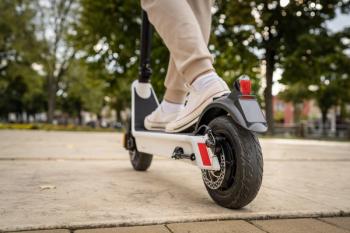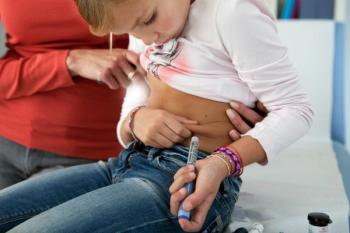
- Vol 35 No 12
- Volume 35
- Issue 12
Talk with teens about performance-enhancing substances
To help student athletes perform at their best, emphasize balanced nutrition and conditioning, discourage supplements and stimulants.
“If you get the basics down, the tricks have very little incremental gain,” says Bernard Griesemer, MD, FAAP, adjunct clinical faculty, Department of Sports Medicine and Athletic Training, Missouri State University, Springfield, Missouri, “and if you don’t get the basics down, the tricks provide only incremental gain.”
This is the key message that Griesemer wants pediatricians to know about the escalating use of performance-enhancing substances (PES) by student athletes.
Speaking in a session titled “Performance-enhancing substances in teens: The cost of superpowers” at the American Academy of Pediatrics (AAP) 2018 National Conference and Exhibition in Orlando, Florida, on November 4, Griesemer emphasized the need to return to the basics to ensure safe and effective ways for student athletes to perform at their best. In his talk, he also discussed the adverse effects of PES in children and highlighted the need for pediatricians to educate both parents and athletes on the lack of clear and strong evidence of these drugs.
Basics are best
Dividing his session into 3 parts, Griesemer first spoke on the importance of the basic ergogenic aids for young athletes, including pre- and post-event meal planning, adequate training, conditioning, and training relative to a student’s physiologic maturity based on the Tanner score. Underlying these basics are a balanced diet and fluid management, particularly the need for good hydration prior to, during, and after an event.
Using these guidelines, Griesemer said becoming a student athlete is pretty basic. “Practice, practice, practice,” he advised, and “eat a good breakfast.”
He suggested that pediatricians ask parents and kids a few basic questions to help guide the conversation about the needs for basic conditioning and training, such as: “What sport are you playing?”; “How old are you?”; “How physically mature are you?”; “What position do you play?”; and, “How long are you playing?”
Adverse effects of PES
During the second part of his talk, Griesemer focused on the growing use of PES by student athletes, including dietary supplements such as energy drinks, creatine, protein and amino acid supplements, multivitamins, and methylphenidate. He also discussed the growing use of methamphetamines, human growth hormone, and anabolic androgenic steroids.
For example, Griesemer said that the use of anabolic androgenic steroids has increased substantially, and that within the population of children who use these drugs, 75% are not using them for athletic performance but for aesthetics. He emphasized the danger of these drugs, particularly if given during a child’s growth spurt. “If these kids get something laced with anabolic steroid in it inadvertently, it will stunt their growth rate,” he said.
“So, some of this stuff is now appropriate to general pediatricians who are not even dealing with athletics and the athletic population,” he said. “It’s just the general population of kids and it is getting younger down to the middle school years.”
Given the escalating use of PES, Griesemer emphasized the need for pediatricians to talk directly and candidly to parents and their children. “They should spend most of the time telling kids and parents what works,” he said, “and emphasize the lack of quality control of the performance-enhancing products.”
Griesemer added that anytime a child or parent comes in with a PES or a question about one, the only ethical answer a pediatrician can give is “I don’t know.”
In the third part of his talk, Griesemer discussed what is on the horizon in terms of newer PES and the emergence of selective androgen receptor modulators (SARMs) and genetic engineering. “These are what worry us about the next group of athletes coming through,” he said.
The main message of Griesemer’s talk was a return to his opening statements. “Sticking to the basics is the biggest bang for the littlest buck,” he said. “These other PES are not reasonable. They offer very little incremental gain.”
Commentary
Dr. Griesemer highlights several important shifts in adolescent use of performance-enhancing substances (PES), and we need to broaden our understanding of “performance enhancement.” Traditionally, this term has been used to describe substance use for the purpose of improving sport performance, and we have focused our education efforts on young athletes. However, recent data suggest that many nonathletes are using PES for purposes completely unrelated to sport.
The concept of “performance enhancement” now encompasses attempts to improve cognitive or academic performance, which typically involves use of over-the-counter stimulants or diversion of stimulants prescribed for attention-deficit/hyperactivity disorder (ADHD). A 2013 analysis of national data from high school seniors found that almost 10% admitted to nonmedical use of prescription stimulants.
In addition, much PES use is driven by efforts to improve appearance, which reaches far beyond the athletic population. Stimulants and other substances marketed as “thermogenic aids” are often used in attempts at weight loss. Efforts at building muscle mass may involve use of sports supplements such as creatine, or illicit drugs such as anabolic steroids or human growth hormone (HGH). Terminology is evolving to reflect this pattern, and the term “appearance and performance-enhancing substances” (APES) is finding its way into common parlance.
Although the pattern of adolescent PES use appears to be changing, the results of PES use are as ineffective as ever. Studies looking at “best-case scenarios” of PES impact on sports performance show gains that are trivial compared with those that are seen with normal growth and development. Use of stimulants and diet pills does not correlate with long-term weight loss, and nonmedical use of ADHD medications does not enhance academic success.
Given this lack of benefit, pediatricians need to emphasize to their patients that efforts at appearance and performance enhancement through use of illegal drugs (such as HGH or anabolic steroids) or of dietary supplements (from an industry where 70% of supplement manufacturers were not compliant with generally recognized good manufacturing processes, as found in a 2013 study) are not worth it, and will not increase the likelihood of the desired result.
Michele LaBotz, MD, FAAP, is clinical assistant professor, Tufts University School of Medicine, Boston, Massachusetts, and member, Council on Sports Medicine and Fitness, American Academy of Pediatrics.
Articles in this issue
almost 7 years ago
Do infants who had colic have more behavioral problems as toddlers?almost 7 years ago
Physical literacy: New paradigm for fighting physical inactivityalmost 7 years ago
Best tech for Pediatrics: 2018almost 7 years ago
Perinatal smoke exposure linked to GERalmost 7 years ago
Infant resists moving right shoulder or elbowalmost 7 years ago
Sleep management is crucial for infants and young childrenalmost 7 years ago
Carefully monitor patients on biologic response modifiersalmost 7 years ago
Use guidelines to diagnose pediatric sleep apneaalmost 7 years ago
Girl’s hands shrivel when exposed to waterNewsletter
Access practical, evidence-based guidance to support better care for our youngest patients. Join our email list for the latest clinical updates.














